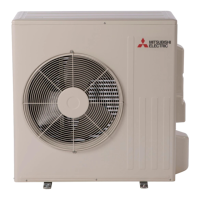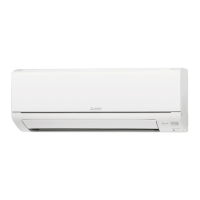
Do you have a question about the Mitsubishi Electric MUZ-WR09NA and is the answer not in the manual?
| Brand | Mitsubishi Electric |
|---|---|
| Model | MUZ-WR09NA |
| Category | Air Conditioner |
| Language | English |
Specifies the standardized conditions used for performance testing of the units.
Defines the operational voltage and temperature limits for the air conditioner units.
Presents detailed performance metrics like capacity and power consumption under various conditions.
Graphical representation of cooling performance characteristics versus operating conditions.
Graphs illustrating condensing and suction pressures during cooling operation.
Table summarizing key operational parameters and specifications for standard conditions.
Graphs showing how inverter frequency affects capacity and input power.
Instructions for performing a fixed-frequency operation or test run of the unit.
Describes the operational logic for the outdoor fan motor, including its interaction with the compressor.
Explains the control sequences for the reversing valve coil in cooling and heating modes.
Maps sensors to their functions and the actuators they control in the system.
Procedure for modifying the defrost finish temperature setting via jumper wires.
Method for activating or deactivating the pre-heat control for low-temperature operation.
Essential safety precautions and guidelines before performing any troubleshooting procedures.
Step-by-step guide to retrieve and interpret stored error codes from the unit's memory.
A comprehensive table mapping symptoms, LED indications, conditions, and remedies for fault diagnosis.
Specifies resistance and voltage criteria for testing key components like sensors and motors.
Diagnostic flows for inverter and compressor issues, including open phase and start failures.
Procedures for diagnosing sensors, R.V. coil, fan motor, power supply, LEV, and P.C. board faults.
Steps to identify miswiring, serial signal errors, and electromagnetic interference.












